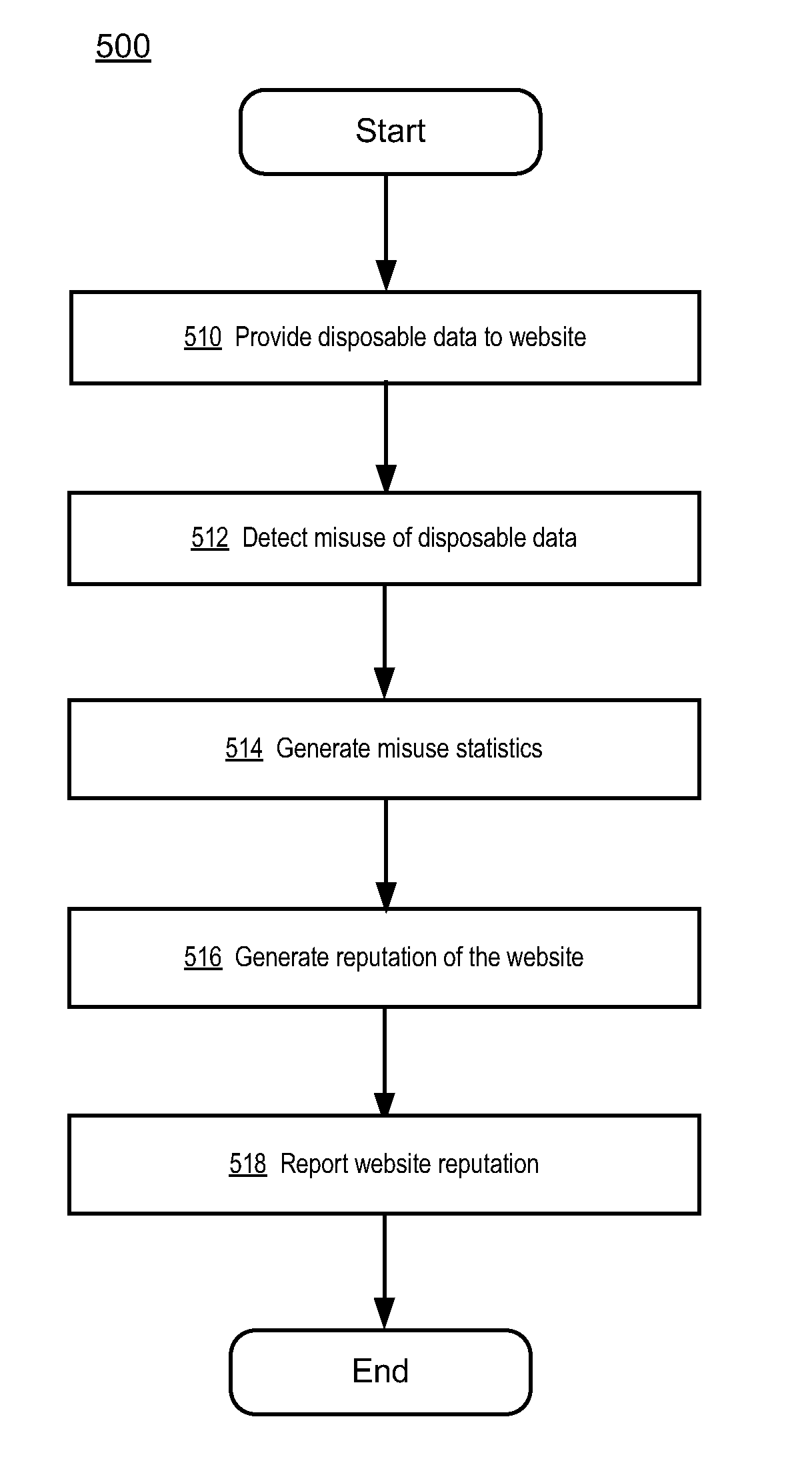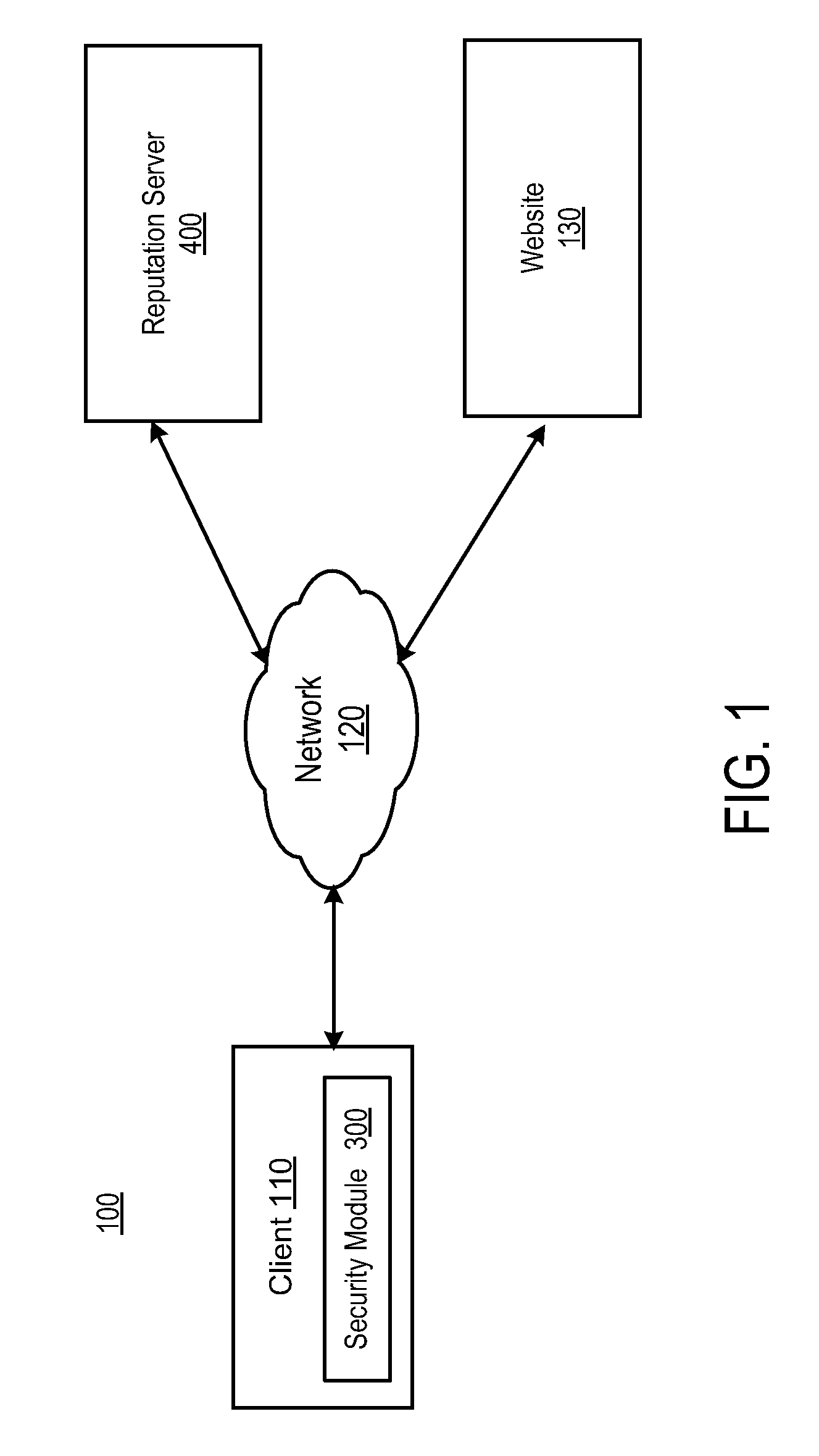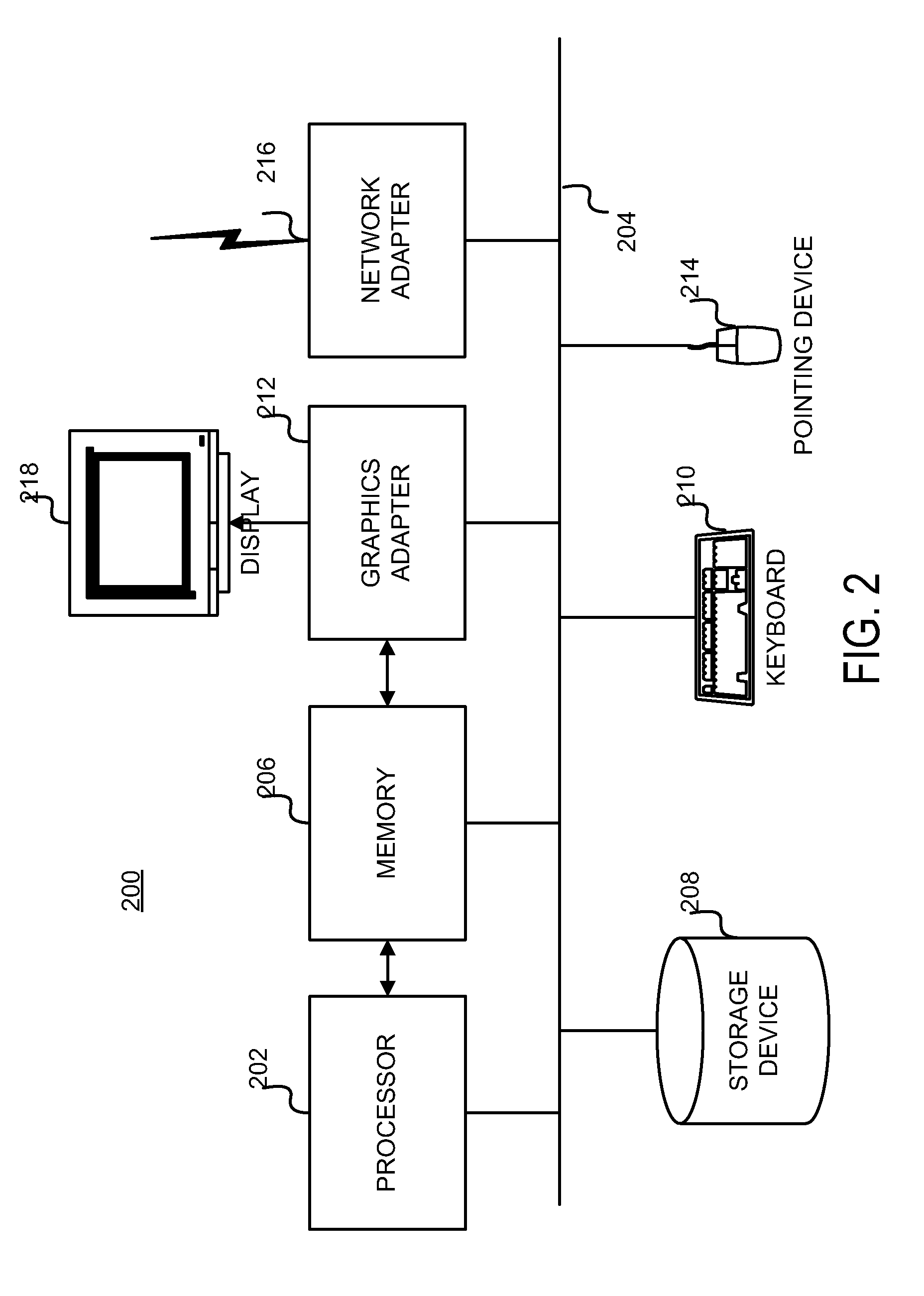Using disposable data misuse to determine reputation
a technology of disposable data and reputation, applied in the field of determining reputation, can solve problems such as the risk that the website will send unsolicited emails to the address of consumers, and the website will abuse the credit card
- Summary
- Abstract
- Description
- Claims
- Application Information
AI Technical Summary
Benefits of technology
Problems solved by technology
Method used
Image
Examples
Embodiment Construction
[0018]FIG. 1 is a high-level diagram illustrating an environment 100 having a reputation system that evaluates and provides reputations for websites 130 according to one embodiment. The illustrated environment 100 comprises a client 110, a reputation server 400, and a website 130. The client 110, the reputation server 400 and website 130 are interconnected via a computer network 120. Only one of each entity is shown in FIG. 1 in order to simplify and clarify the figure. Embodiments of the environment 100 can include many clients 110 and websites 130, and also multiple reputation servers.
[0019]The illustrated environment 100 represents a typical computing environment where multiple consumers interact with multiple websites 130. In this environment, a consumer uses the client 110 to access online services provided by a website 130. The reputation server 400 receives information regarding consumer interactions with the website 130 and generates a reputation score for the website 130. T...
PUM
 Login to View More
Login to View More Abstract
Description
Claims
Application Information
 Login to View More
Login to View More - R&D
- Intellectual Property
- Life Sciences
- Materials
- Tech Scout
- Unparalleled Data Quality
- Higher Quality Content
- 60% Fewer Hallucinations
Browse by: Latest US Patents, China's latest patents, Technical Efficacy Thesaurus, Application Domain, Technology Topic, Popular Technical Reports.
© 2025 PatSnap. All rights reserved.Legal|Privacy policy|Modern Slavery Act Transparency Statement|Sitemap|About US| Contact US: help@patsnap.com



